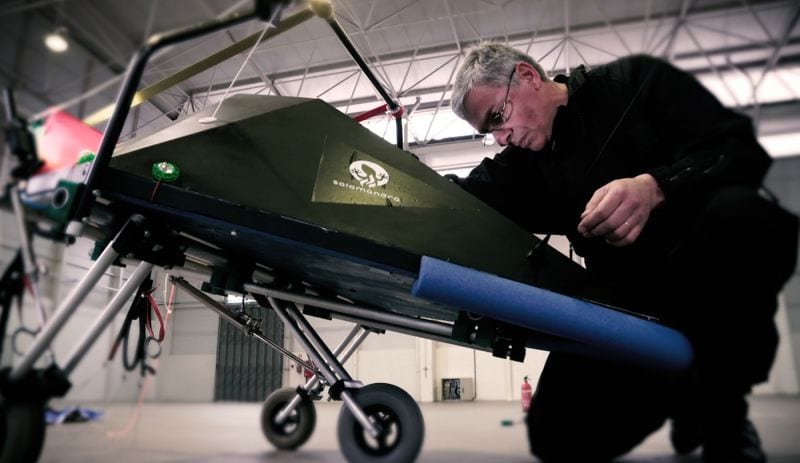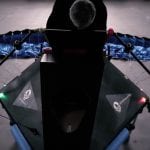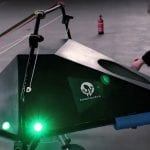
Industry
Portugese Drone with Integrated Parachute Also Helps Fight Fires
Portugese Drone with Integrated Parachute Also Helps Fight Fires
Now there is an integrated parachute drone. And it can help to prevent fires.
DragonPraxis was created by ex-members of the Army of Portugal, who were inspired to create a drone to which a parachute was added. Safer and able to carry cargo, it may help in fires and in the monitoring of the sea coast.
Jorge Tavares is the DragonPraxis CTO and responsible for the idea of a parachute drone. It’s not an entirely new idea though, as Tavares first came up with the idea when on duty with the Portugese Army going back almost 20 years. Now, he has demonstrated his concept in a video with The Next Big Idea.
“This idea came up many years ago, I was still on duty in the Army. At the time there was a lot of talk about UAVs, in Portugal there was no mention of that and I remembered ‘Let’s make a drone, a UAV, by the way. But what if it falls? We’ll bring you a parachute! What if the parachute does not open? So it’s best to take off with the parachute open,” Tavares told a Portugese website. “This is what was the origin of our Remotely Piloted Aircraft System, a system that is naturally stable and naturally safe, like any motorised paragliders we see today manned, flying on the beaches.”
“In our Army we have some elite forces and one of them is called precursors, who are the first to jump. It is a restricted force of the parachutists, who have to jump in the dark, with no support, and are the first to reach the ground. They will hold a certain area before there will be a landing of the parachutists. Having a human precursor is always a risk. Why not make a precursor that is mechanical? This is how this idea of the parachute came about. We have a parachute that is stable, is safe, and we have the possibility to use it in those tasks that follow the rule of the three D’s: dirty, dull and dangerous,” Tavares said.
The idea itself and the first drawings emerged in 1999, but the path was taken in small steps. The patent was registered in 2003 and “was considered by the National Institute of Industrial Property for inventive activity of first category”. In the same year they earnt their wings to take flight, winning a contest run by the Innovation Agency.
- The Next Big Idea/Youtube
- The Next Big Idea/Youtube
- The Next Big Idea/Youtube
However, existing legislation did not yet allow this device to take to the skies, with flight only being approved in January 2017. Along the way DragonPraxis – as another company – was taking shape and expanding their ideas.
Now, DragonPraxis is “a company that is running a national invention patent for a remotely piloted air system, more commonly known as a drone. It is a system that is distinguished by its intrinsic safety and its natural stability. If there is a problem with the propulsion, with the control, everything behaves like a parachute that comes down to the ground. Our motto is safety first,” says Tavares.
The operating mode of this drone is quite specific. “Basically we have two types of monitoring: electric or gasoline. The drone may pick up a flying course on a runway or, better yet, pick up a flight from a trailer or a jeep roof. Much of the utilization that we envisage for this system is actually in wild, off-piste and aerodrome sites where it is most needed. Usually near forests, firefighters, coast and sea monitoring, in places where we do not have an aerodrome near by and it is necessary that the operator has the possibility to put it in the air. So you can take off by traction from a car,” he explains.
“This system is called PRX25: PRX means precursor, 25 because it has to do with the maximum take-off weight of 25 kilograms.” And with this, what can be done in practice? For now, the big bet is related to the fires that were felt a little throughout the country in 2017.
“At this moment we have two prototypes, we have more than 100 hours of flight tests. In the coming months, we want to start providing services, especially in an area that we believe is very important, which is the area of forest protection. Before firefighting, information is collected in winter on the locations we want to protect; there is the deterrence of banditry which has to be taken into account as one of the protections for the forest, “explains the founder.
“The next step is to be ready to provide relief to the operational staff on the ground and, in addition, to form an autonomous communications network in the area where a fire is occurring. That is to say, this system can be a superficial satellite, a base station that is suspended to put all the elements that integrate the fire-fighting scenario, so as to integrate them all into an independent network of infrastructures, which can be quickly designed for the venue. And more than that, this is a system that can be piloted after just over 40 hours of training by an element of Civil Protection or an element of firefighters.”
One of the advantages of using these is the price. “The aircraft that are used in the firefighting take on average, for an hour of flight, 1800 euros. The flight time for these systems is around €200. ” However, DragonPraxis bets on prevention and not so much combat.
Regarding the coast, the possible applications of this drone with integrated parachute are many. “One of the applications related to the sea is the searches and rescue. We can put a system of these on the lookout for castaways and eventually send inflatable boats or find them at any time of the day or night. The advantage of such a navigation system is that it does not have a pilot up there, there is no risk to the pilot. Since manned aviation itself does not fly at night at low altitudes, the risk of collision is very low. It will be a good option from the moment we know that there was a shipwreck on the Portuguese coast, we take no greater risk when sending such a system, because people are already in danger. We just have to win with it,” he said.

The Next Big Idea/Youtube
However, there are still some details to be honed. The system of 25 kilos also conditions the transportation of goods and, in addition, the autonomy of the device is still reduced: one hour if the system is electric and three hours if it runs on gasoline. But one step at a time. “Once we have a history of a 25-kilogram system, we can easily obtain certifications for the 35-kilogram systems, where we may already be six hours without being replenished. The technology that allows us to control a system of 25 kilos more easily controls a system of 600 kilos, of which 400 may be payload. The control technology is the same.” DragonPraxis’ vision for now is to keep growing and developing their ideas.
We want this system to spread and be widely used, starting with the PRX25, then evolving into the PRX35, PRX60 and so on, whether it is protecting people – which is essential – or protecting assets and improving the quality of life and safety of people,” ends Tavares.





















